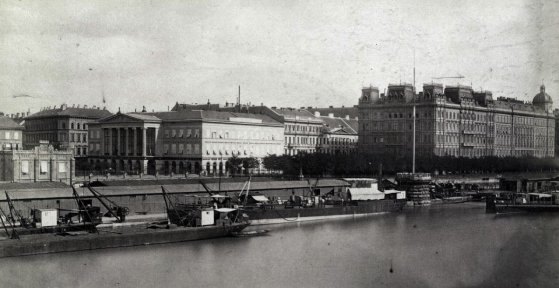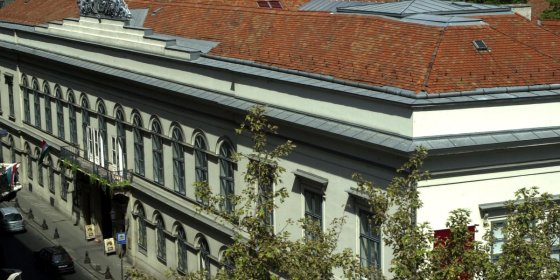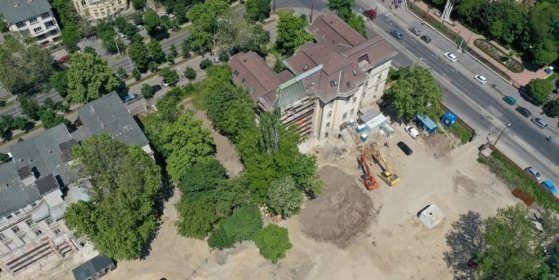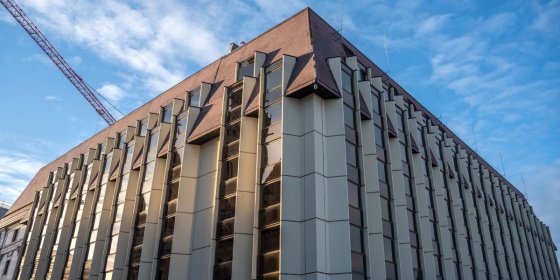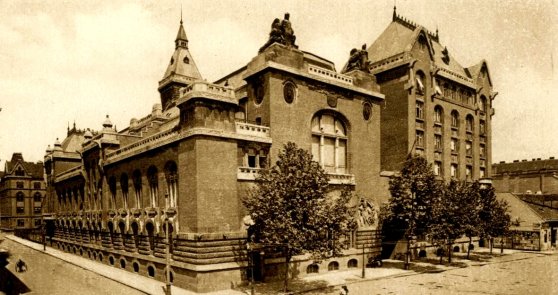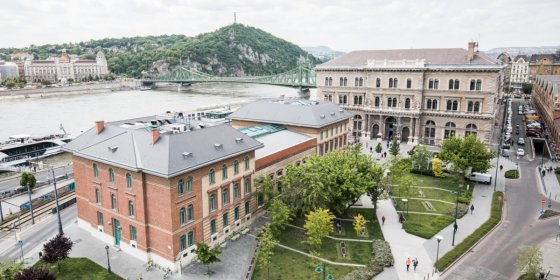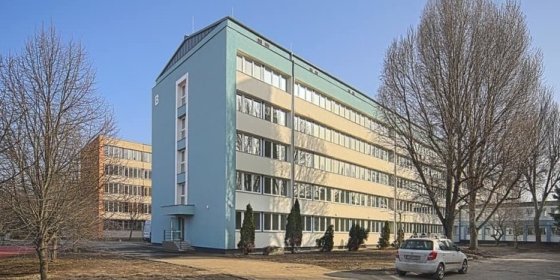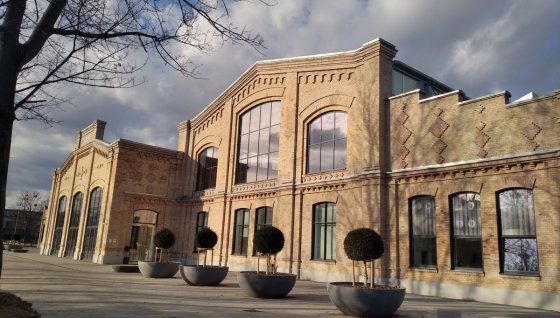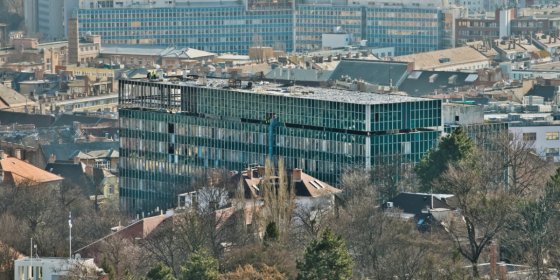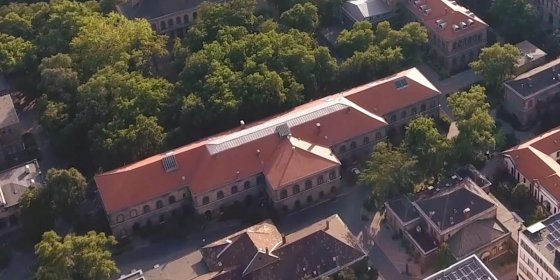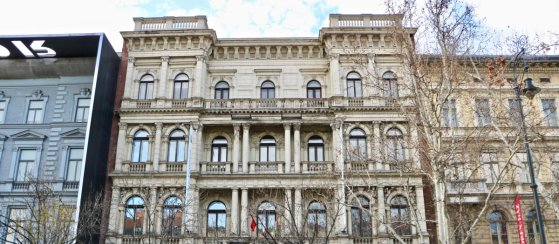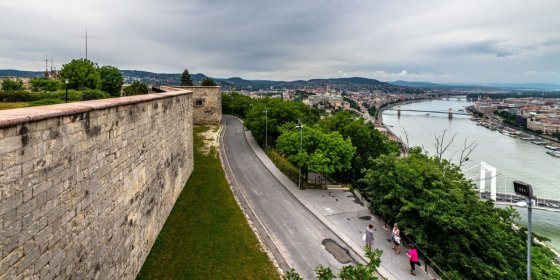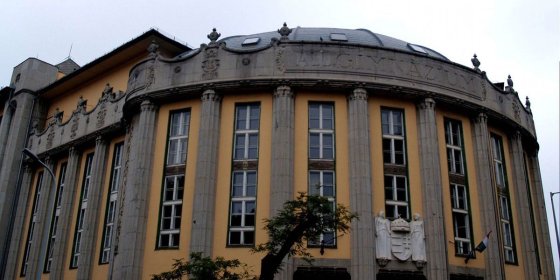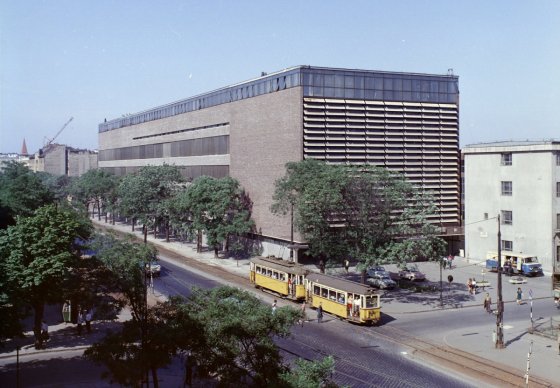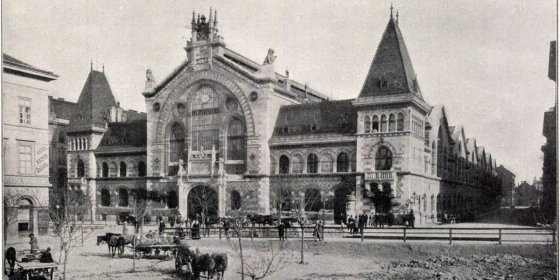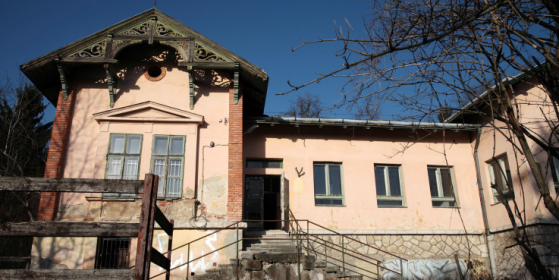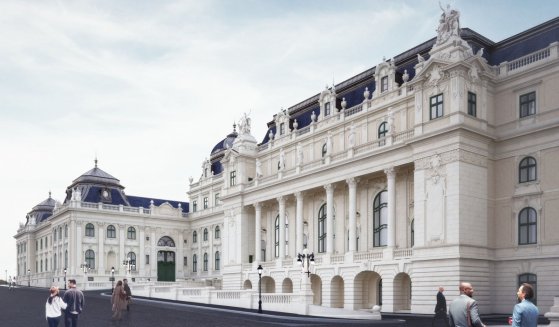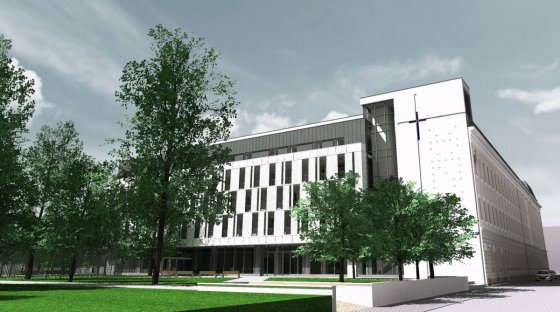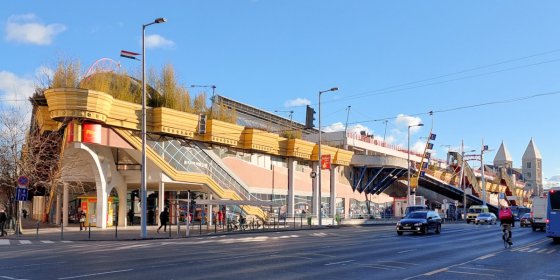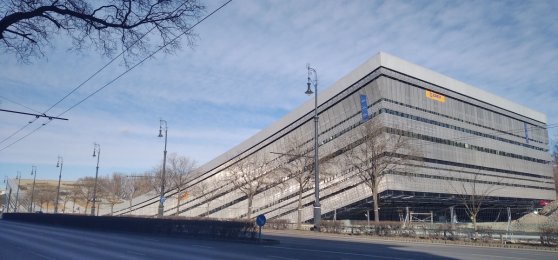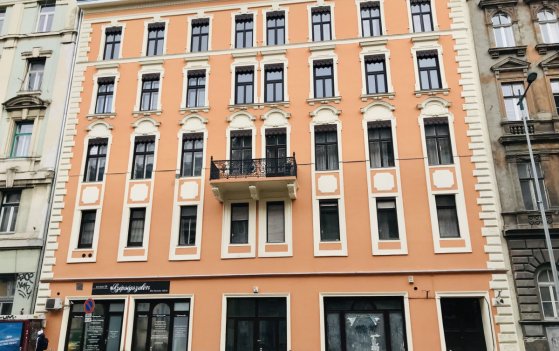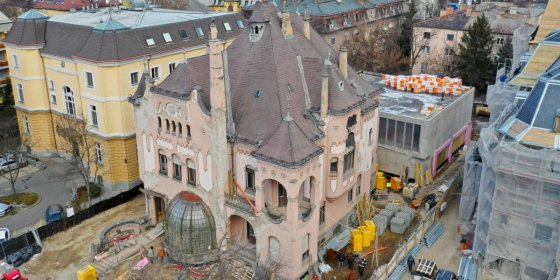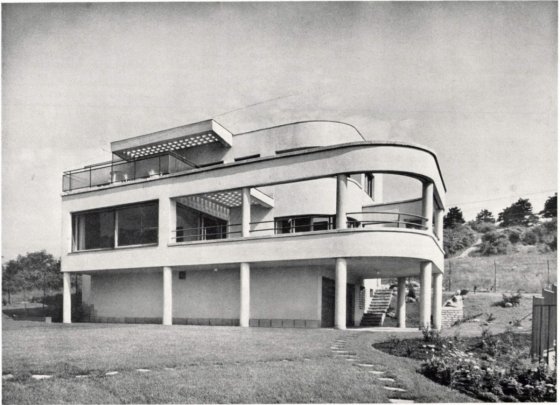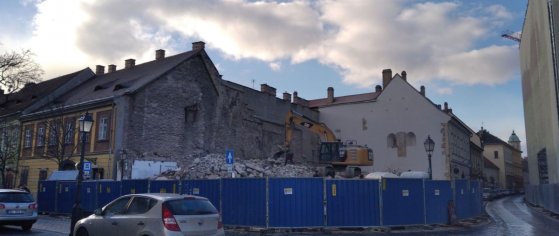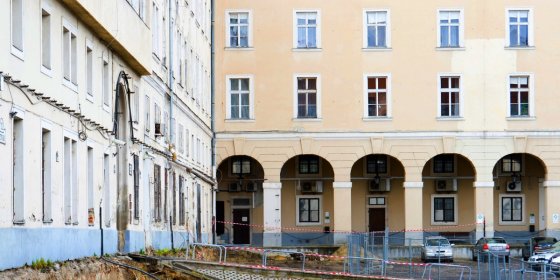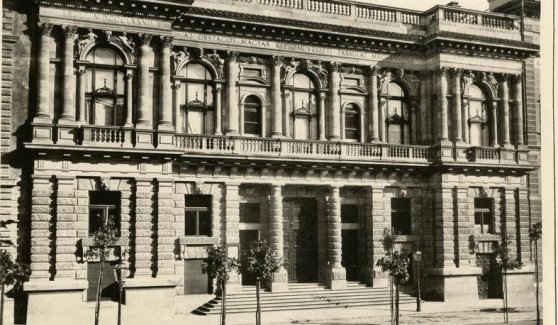 The „intertwined history” of the bridges and the city of Budapest
Which ideas and events have shaped the fate of bridges of Budapest and the cityscape? Alongside many other interesting facts, this question is also answered this newly published book by the Budapest City Archives, which introduces the history of bridges in Budapest.
The „intertwined history” of the bridges and the city of Budapest
Which ideas and events have shaped the fate of bridges of Budapest and the cityscape? Alongside many other interesting facts, this question is also answered this newly published book by the Budapest City Archives, which introduces the history of bridges in Budapest.
Architecture
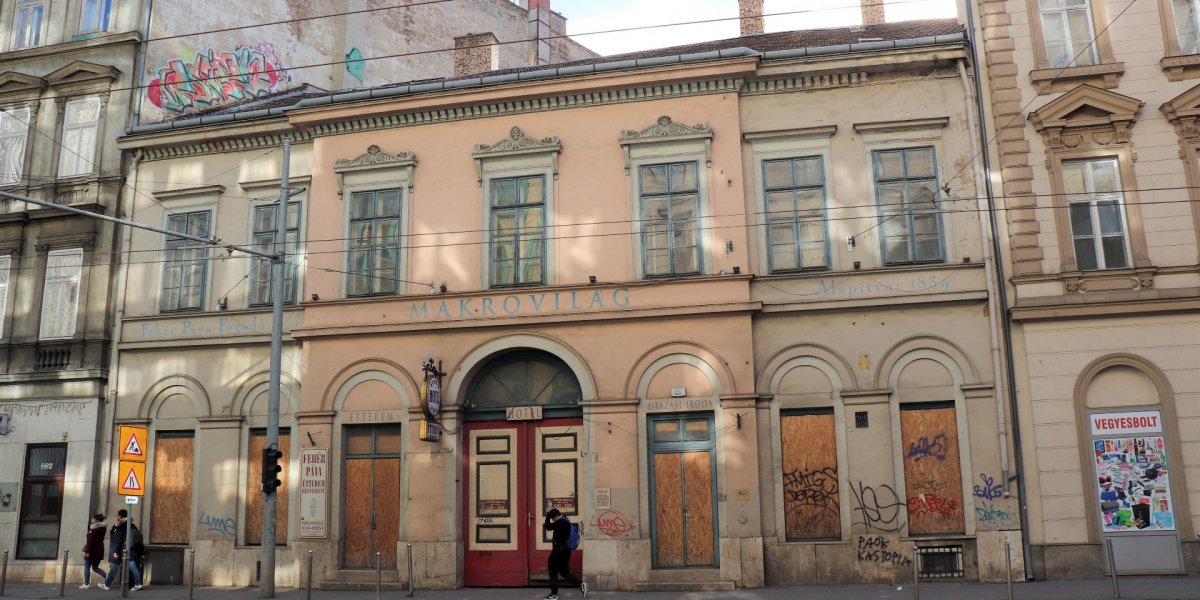 From a noisy apartment building to the palace of the Academy: János Arany lived in many places in Pest
From a noisy apartment building to the palace of the Academy: János Arany lived in many places in Pest
March 2, 2022 at 9:00 AM
Born 205 years ago, János Arany first saw Pest in 1843, but he only became a permanent resident of the city more than a decade and a half later, in 1860 - and remained so until his death. Several of the poet's former homes in Pest still stand today: the two classicist houses on Üllői Road preserve the memory of the poet, as well as the magnificent palace of the Academy, in which he lived for the rest of his life.
Rising houses - How did Budapest's development into a world city begin?
March 1, 2022 at 9:00 AM
As a result of the Compromise of 1867, dizzying economic development began in Hungary. This was particularly striking in the capital, which in a few decades has evolved from a medium-sized settlement to one of the largest cities in Europe. People flocked to Budapest from the countryside, and more and more houses were built to give the new townspeople a place to live.
Development of the Aquincum Museum has begun - the wonders of ancient monuments are presented in an experiential way
February 28, 2022 at 12:00 PM
The long-awaited development work has begun at the Aquincum Museum, during which a completely new experience wall will be built on the site of the rusty iron fence on Szentendrei Road and a new exhibition will be created to give a glimpse into the lives of the Romans who once lived here. Orsolya Láng, the director of the museum, told Pestbuda exactly what is changing.
The interiors of Károlyi Palace are being renovated
February 27, 2022 at 7:00 PM
The interiors of the Károlyi Palace in the 5th district, which has housed the Petőfi Literary Museum for sixty-five years, are being renovated. The restoration affects a listed one-storey, classicist building of about 1,730 square meters. As part of this, they will improve public traffic, restore the ornate gate, restore and expand the exhibition spaces, and make the building accessible. In 2000, during the complete renovation of the palace, the architecture that was finalized in the first half of the twentieth century being reversed. The palace is expected to be completed in the fall of 2022.
No viable idea was received for the tender for the design of the new museum of architecture
February 25, 2022 at 5:00 PM
The jury of the Hungarian Academy of Arts did not find any worthwhile project in the design competition for the design of the Hungarian Museum of Architecture and the Documentation Center for the Protection of Monuments. The new building will be built on the plot complex at the corner of Bajza Street and Városligeti Avenue in the former BM Hospital, once the appropriate tender is available.
Twenty-six buildings in the 1st District were declared protected by the capital, most of them built in the Kádár era.
February 24, 2022 at 8:00 PM
Twenty-six 1st District properties, mainly erected between 1956 and 1978, were declared protected by the Budapest General Assembly on Wednesday. These include the main building of the Southern Railway Station, the Hilton Hotel building in Budavár and several residential buildings. The local council of Budapest announced in January that it planned to place nearly one hundred and eighty buildings in Budapest under local protection.
The Józsefváros Telephone Centre fit perfectly into the city, today it houses elegant hotels
February 23, 2022 at 9:00 AM
The incorporation of industrial buildings into the urban environment was an important urban development issue in the 1880s. On the one hand, they tried to move - in many cases relocate - the noisy large plants that often emit polluting substances farther from the city centre, and on the other hand, the leaders of the capital wanted to design the centres suitable for the development and service of public utilities and communications in such a way that they fit as closely as possible into the architecture of a given street or space. Fortunately for posterity, this intention has mostly produced eye-catching results, a good example of which is the József Telephone Centre.
The renovation of the Salt House on Fővám Square continues
February 22, 2022 at 4:30 PM
The 9th district Sóház renovation is continuing. Restoration of the south wing of the building used by Corvinus University has already begun last year, with more work being done in the north wing this year. The building behind the Main Customs House, designed by Miklós Ybl, will restore the main gates, the façade, the classrooms, the buzzer, the machinery and the electrical system.
The building of the Márton Áron Vocational College in Budapest was modernized
February 19, 2022 at 1:30 PM
The 518-seat building of the Márton Áron Vocational College was renovated in the 3rd district Kunigunda road. The institution was placed under the management of Eötvös Loránd University in 2016, and in that year the government decided on the HUF 15 billion renovation. The first element of this is the modernization of the now handed over dormitory. In recent years, there have been improvements and modernizations in all ELTE colleges.
Wonder in Kőbánya - We went to the Eiffel Art Studios
February 19, 2022 at 9:00 AM
The Eiffel Art Studios of the Hungarian State Opera is one of the new attractions of the 10th District and of the whole of Budapest. From the former Északi Járműjavító [Northern Locomotiv Workshop] of MÁV, it has become a cultural centre offering colourful programs, while also helping the operation of the Opera. Not only is the Art Studios [Műhelyház in Hungarian, meaning Workshop] interesting because of its complex function, but the recently completed renovation of the hall, originally built in 1886, has also been a great success.
The Ménesi road campus of Corvinus University is being demolished
February 18, 2022 at 6:00 PM
It can be clearly seen from the bank of the Danube in Pest that the Corvinus University Ménesi road campus is being demolished. A new university building will be built in its place, but the area is planned to remain an integral part of the city fabric. In the new building, which is expected to be completed next year, educational and research spaces, a dormitory, professor's apartments, community and representation rooms, as well as rooms suitable for sports and recreation will be established.
The neo-renaissance complex of the University of Veterinary Medicine is being renewed
February 18, 2022 at 2:00 PM
The building complex of the University of Veterinary Medicine, designed by Imre Steindl and decorated with majolica Zsolnay and lead glass by Miksa Róth, will be renewed. The buildings on Rottenbiller Street, completed in 1881 and now home to one of the oldest veterinary training universities in Europe, are being restored to conservation standards. As part of this, the red brick masonry, the roof structures, the windows and the cladding will be restored, but the mechanical and electrical systems of the buildings will also be renewed.
The builder, János Bobula, could live in one of the most beautiful palaces on Andrássy Avenue only for a few years
February 18, 2022 at 10:00 AM
"It is one of the most beautiful buildings on the avenua," said the contemporary press when 62 Andrássy Avenue, formerly known as Bobula Palace, was built in 1882-1883. Maybe it wasn't called that for no reason. The carefully designed building, the list of famous artists of the age, the unique furnishings all suggest that the praise was justified. Moreover, the building faithfully reflected the owner’s financial situation, social status, and architectural views. Although the house is known to everyone today as “a building next to the House of Terror,” Bobula’s Palace deserves much more than that.
The pedestrian underpass and stairs of the Gellért Hill cable car can be built
February 17, 2022 at 1:00 PM
The company responsible for the development received a permit for the construction of the tunnel leading to the station of the future Gellért Hill cable car and the stairs leading to Hegyalja road. With this, the construction of the cable car to the Citadel, which is expected to be completed by the end of 2023, has taken another step closer to completion.
The Swan Song - Ödön Lechner's last building
February 17, 2022 at 10:00 AM
In recent days, the Szent László Grammar School in Kőbánya has appeared frequently in the media. Although it was only visible as the background of the events, the viewers may have noticed the special facade of the building and its unique decorative elements - this is explained by the fact that it was the last work of Ödön Lechner (the genius who created the Hungarian architectural form), and it was finished in the year of the master's death, in 1914.
The former Beloiannis factory and several other modern buildings in Újbuda may be under local protection
February 16, 2022 at 6:30 PM
Several modern buildings in the 11th district would be placed under local protection by amending the relevant decree in the capital. These are the blocks of the Beloiannisz Telecommunications Factory dated to 1962–1963, the former Vertesz office building handed over in 1963, or the residential building on the corner of Fehérvári road, Eszék street, completed in 1960.
The renovated Opera House will reopen in March
February 16, 2022 at 1:30 PM
After a break of five seasons, the Hungarian State Opera House on Andrássy street will reopen on 12 March, now completely renewed. During the large-scale restoration and modernization, the facade of the Neo-Renaissance palace designed by Miklós Ybl was restored, the stage technology was modernized, the acoustics were improved, the orchestral trench was remodeled, and the public utility network of the Opera House was replaced. The house will open with a festive concert under the direction of Domác Plácido, Ádám Medveczky, Gergely Kesselyák and Balázs Kocsár.
Market halls, which have been handed over 125 years ago, have become the sights of Budapest
February 15, 2022 at 10:00 AM
Modern food supply was one of the important factors in the development of Budapest into a world city. City management found it essential to have indoor, health-friendly stalls, constantly monitored inventory, fixed prices, and fixed opening hours, but little or no open-air markets could meet these conditions. The market halls were designed to regulate all this: the Central Market Hall on Fővám Square, the Rákóczi Square, the Klauzál Square, the Hunyadi Square and the Hold Street Market opened on 15 February 1897, just 125 years ago.
The keys to Villa Haggenmacher were handed over, and the building was saved
February 14, 2022 at 2:00 PM
The Hungarian State exercised its right of pre-emption and purchased the 12th district Haggenmacher villa, which was once replaced by the Eye of God inn. The keys were handed over in days. The valuable monument will therefore remain in the public domain and will be used for community purposes after the renovation.
A forgotten ramp - Another part of Buda Castle is being rebuilt
February 11, 2022 at 10:30 AM
Buda Castle was not only a beautiful architectural work inside and out until the middle of the 20th century, but also a venue for dazzling events, where guests arrived in carriages and later in elegant cars. After 1905, the main entrance opened from Szent György Square, in a newly built wing building with a ramp on the other side. This building, which bridges the level difference, will also be part of the future reconstruction of the palace.
The Ráday College, which is being built on the site of the burned dormitory, is ready for construction
February 8, 2022 at 2:00 PM
The new, modern Ráday College of the Károli Gáspár Reformed University is being constructed in the interior of the dormitory, which burned down in tragic conditions in 2019. In the attic of the new building, above the nearly 100-seat dormitory, a chapel will be built, but there will also be a music hall, a roof terrace and the Pál Török Faculty Library. In addition to the restoration, the entire headquarters of the Dunamellék Reformed Diocese will be renewed, as part of which the facade of the old building on Ráday Street will be restored to its 1911 condition.
The Lehel Market Hall building was handed over 20 years ago
February 8, 2022 at 9:30 AM
The Lehel Market Hall building was handed over twenty years ago on the site of the more than 100-year-old Lehel Square Market. The view of the huge five-story hall, which includes more than three hundred business premises, is still very divisive. Thousands of people shop every day in the hall built in the postmodern style. How could it be that even though they wanted to design a hall here as early as the 1900s, they had to wait until the 2000s? That is what PestBuda investigated.
The new Museum of Ethnography will be handed over in the spring
February 6, 2022 at 9:00 AM
There have been huge changes in City Park recently that are not over yet. The huge car park behind the Kunsthalle (Műcsarnok) has been occupied by an impressive building, the new Museum of Ethnography. It attracts attention not only with its sheer size but also with its shape - all while respecting the park nature of its surroundings. In the spring, anyone will be able to go up to the top of the building, but for the time being, only a few of those interested had the opportunity to do so.
The building that was once home to books - The Révai Brothers' Bookstore on Üllői Road
February 5, 2022 at 9:00 AM
The section of Üllői Road between Kálvin Square and Nagyvárad Square has several buildings that are important not only for their architectural values but also for their cultural history. Fortunately, over the past few years, several of these have been successfully renovated as originally planned. The house at 18 Üllői Road also belongs to this group, it was renovated after many decades of deterioration. Visitors probably do not know that when this house was rebuilt in 1898, it housed the Révai Brothers' Bookstore.
The renovation of the Sipeki Balás villa designed by Ödön Lechner is progressing spectacularly, the new part of the building is ready for construction
February 4, 2022 at 7:00 PM
The complete reconstruction of the Art Nouveau villa, built between 1905 and 1907 on Hermina road, now the headquarters of the Hungarian National Association of the Blind and Visually Impaired (MVGYOSZ), began in the spring of 2021. Part of the work is the refurbishment of the roof, the renovation of the 2,700-square-meter plaster under restoration supervision, but the hall's unique fireplace and stairs, decorated with bluish eosin-glazed tiles, and the artificial stone elements of the façade, are regaining their old splendor. The new part of the building, which was demolished next to the villa and was erected on the site of an outbuilding in the 1970s, has already reached its finished state.
The new ward of St. John's Hospital opens in the former Járitz Villa
February 3, 2022 at 7:00 PM
Completed in 1942, The new child and adolescent psychiatric rehabilitation ward of St. John's Hospital will be established in the Bauhaus-style Járitz Villa in the 2nd district. The villa was built between 1941 and 1942 according to the plans of the car dealer István Járitz József Fischer, the building once housed luxury apartments.
The former diplomatic residence in the Castle was demolished
February 3, 2022 at 9:00 AM
The demolition of the former diplomatic residence, the later Burg Hotel, was completed this week in the Szentháromság Square in Buda Castle, leaving only piles of rubble. The building, designed by György Jánossy and László Laczkovics and completed in 1981 is planned to be replaced by a house that will evoke the exterior of the buildings originally demolished after World War II.
The renovation of the facade of the Town Hall on Károly boulevard has started
February 2, 2022 at 7:00 PM
The long overdue renovation of the Budapest Central Town Hall has begun. Under archeological supervision, the courtyard slope has already been demolished and the façade will soon be erected. According to the information, the Gerlóczy Street wing of the three-hundred-year-old building will be renovated, where the Budapest Gallery will move in after the renovation, the facade of Bárczy István Street will receive decorative lighting, the Merlin Theater building will be renovated and the Town Hall Park may finally open next year.
The complete renovation of the lower embankment of Pest continues
February 1, 2022 at 7:00 PM
Another section of the Danube bank in Pest will be renewed, as part of which the redesign of the Salkaházi Sára embankment and Közraktár street running in front of Fővám square will begin. During the works, the traffic on the embankment will be dampened and new pedestrian areas will be created. According to the plans, it will be easy and safe to walk along the entire Danube bank section between Havas street and Közraktár street.
The 150-year-old University of Fine Arts evokes the history of the Old Art Gallery
January 31, 2022 at 3:00 PM
In addition to the newly restored Lotz frescoes of the main building of the Old Art Gallery, the exhibition entitled Space Reservations - The Stories of the Old Art Gallery of the Hungarian University of Fine Arts (MKE) awaits the public from 15 February with classic and contemporary works of art and documents evoking the house's past. The exhibition is part of a series of programs celebrating 150 years of the University.
More articles
 The „intertwined history” of the bridges and the city of Budapest
Which ideas and events have shaped the fate of bridges of Budapest and the cityscape? Alongside many other interesting facts, this question is also answered this newly published book by the Budapest City Archives, which introduces the history of bridges in Budapest.
The „intertwined history” of the bridges and the city of Budapest
Which ideas and events have shaped the fate of bridges of Budapest and the cityscape? Alongside many other interesting facts, this question is also answered this newly published book by the Budapest City Archives, which introduces the history of bridges in Budapest.
 The Bridge Report, which brought a turning point in the history of Budapest
A travel report that changed the history of Pest and Buda, as well as Hungary. The little book contributed to the change of half a thousand years of legal customs and the implementation of an investment of unprecedented size and technical quality. This book was The Bridge Report [Hídjelentés in Hungarian].
The Bridge Report, which brought a turning point in the history of Budapest
A travel report that changed the history of Pest and Buda, as well as Hungary. The little book contributed to the change of half a thousand years of legal customs and the implementation of an investment of unprecedented size and technical quality. This book was The Bridge Report [Hídjelentés in Hungarian].
 Drama on the university wall - The heroic monument was planned 95 years ago
In the constant hustle and bustle of the Egyetem Square in Pest, the students may not even notice the monument that decorates the short section of wall between the church and the central building of ELTE. However, it commemorates their predecessors, the heroes who fought for their country in World War I, and those who heroically helped them. The first design of the dramatically collapsing soldier was born in 1928, ninety-five years ago.
Drama on the university wall - The heroic monument was planned 95 years ago
In the constant hustle and bustle of the Egyetem Square in Pest, the students may not even notice the monument that decorates the short section of wall between the church and the central building of ELTE. However, it commemorates their predecessors, the heroes who fought for their country in World War I, and those who heroically helped them. The first design of the dramatically collapsing soldier was born in 1928, ninety-five years ago.

